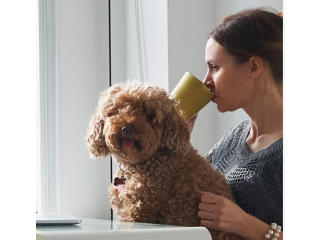Water shoes are the unexpected hottest shoes of summer Private
3 years ago - Multimedia - San Francisco - 235 viewsEvery year around this time, an "ugly" shoe trend seems to burst onto the scene and become the "it" look of the season. It happened with tourist sandals in 2019 and Birkenstocks in 2018, and now it's happening again with water shoes.
If your parents ever made you wear these waterproof shoes at the beach when you were a kid, the term probably conjures up images of mesh, flexible footwear in bright neon colors. But water shoes have gotten a major makeover in recent years and now they're vying for the hearts of fashionistas everywhere, according to a new column in the New York Times.
Traditionally, consumers have relied on water shoes to protect their feet from rocks, provide traction and drain water during all sorts of outdoor activities. But similarly to Crocs, they've usually been a purely functional piece of footwear. "Since they were mainly used for water activities like kayaking, hiking and swimming, water shoes have not been regarded for their style," Sara Skirboll, RetailMeNot shopping and trends expert, told TODAY Style.
But in recent years, the shoe style has transformed in look and feel; nowadays, anything from sock-like shoes to sneakers and sandals can double as water shoes.
The style has even caught the attention of some well-known — and luxurious — brands. Balenciaga models walked down a wet runway wearing a type of hybrid water sock/shoe in March.
Popular footwear brand Teva also recently partnered with Opening Ceremony for a mesh "Hurricane Sock" shoe.
So why are people suddenly embracing this typically "ugly" shoe style? It might have something to do with our overall shift in fashion preferences during the coronavirus pandemic.
"Water shoes may be increasing in popularity as more people are finding new ways to stay healthy, fit and venture out while gyms are closed, which makes hiking, swimming and climbing perfect activities," Skirboll said.
With so many of us finding new ways to explore our own states and putting off scheduled summer vacations, shoes that are fit for outdoor activities have exploded in popularity, and designers have stepped in to dress up the typically utilitarian shoes.
"The desire for comfort and utility is more apparent than ever, but that doesn’t mean those who are fashion-forward want to disown their sense of style. Therefore, we’re seeing luxury brands fill this gap in the market by creating products like water shoes that are functional but still carry the clout of a high-fashion brand," Stitch Fix style expert Layne Cross told TODAY.
Society's sudden penchant for water shoes might also have something to do with the fact that "ugly" shoes, like Crocs, have been creeping into the mainstream for quite some time.
When Do Babies Need Shoes?
Tiny, name brand running sneakers. Sparkly dress-up flats. Wee jelly sandals and loafers…baby shoes are really, really cute. It’s almost impossible not to buy them all up! But just because they’re super-adorable, doesn’t necessarily mean your tot needs them. Worse, putting the wrong shoes on a budding walker may hinder their newfound skills. Here, we break down what your baby’s growing feet really need.
The short answer is no. Your baby does not need shoes until they start walking, according to the American Academy of Pediatrics. The only thing younger babies need on their feet are socks to keep them warm.
Think about it like this: The purpose of shoes (other than to look cute, of course), is to protect the feet. But if your precious nugget is dangling from a baby carrier, relaxing in the stroller, or scooting on their hands and knees, there’s nothing to protect their feet from. If warmth is what you crave for your baby’s tootsies, cozy socks, footed snowsuits, and stroller sacks do the trick.
Beyond not needing shoes, putting shoes on babies who are just learning to balance on their growing feet can be a downright hindrance. Shoes with inflexible soles can prevent a baby from learning how to flex and move their feet to walk. That's why pediatricians recommend that babies learn to walk barefoot in a safe space, like on their living room floor. This’ll help strengthen the muscles and tendons in your baby’s feet.
There is no particular age at which your baby will need shoes, but a good rule of thumb is to wait until they’ve learned to walk and show signs of wanting to be up and about. The general milestone guideline for when a baby begins to walk is:
Between 6 and 13 months: crawling
Between 9 and 12 months: pulling themselves up
Between 8 and 18 months: walking
It is important to remember that not all babies are on the same trajectory. If your child’s progress doesn’t fit neatly in the above timeline, it doesn't necessarily mean something is wrong. Don’t hesitate to talk to your pediatrician about any concerns.
















